Rank Species | Genus Epilobium Higher classification Willowherbs | |
 | ||
Similar Willowherbs, Eriogonum, Eriogonum fasciculatum, Baccharis pilularis, Salvia clevelandii | ||
Epilobium canum california fuchsia everett s choice
Epilobium canum, also known as California fuchsia or Zauschneria, is a species of willowherb in the evening primrose family (Onagraceae). It is native to dry slopes and in chaparral of western North America, especially California. It is a perennial plant, notable for the profusion of bright scarlet flowers in late summer and autumn.
Contents
- Epilobium canum california fuchsia everett s choice
- Epilobium canum california fuchsia
- Description
- Cultivation
- References

The name reflects that in the past it used to be treated in a distinct genus Zauschneria, but modern studies have shown that it is best placed within the genus Epilobium. Other common names include California-fuchsia (from the resemblance of the flowers to those of fuchsias), hummingbird flower or hummingbird trumpet (the flowers are very attractive to hummingbirds), and firechalice.
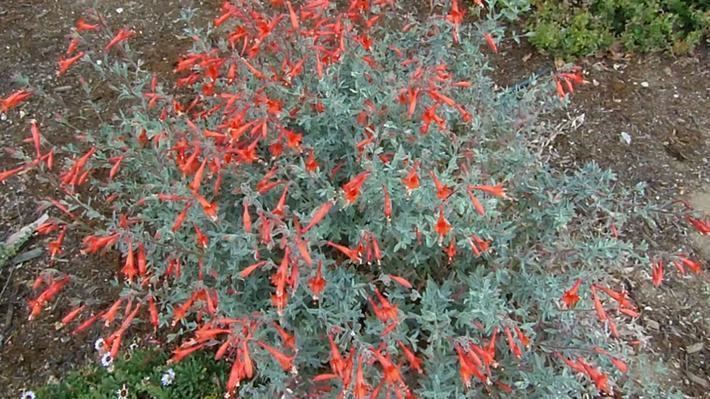
The original genus name was in honor of Johann Baptista Josef Zauschner (1737–1799), a professor of medicine and botany in Prague.
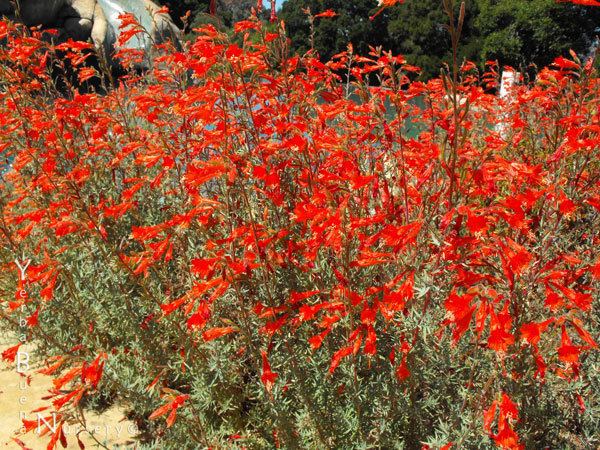
Epilobium canum california fuchsia
Description
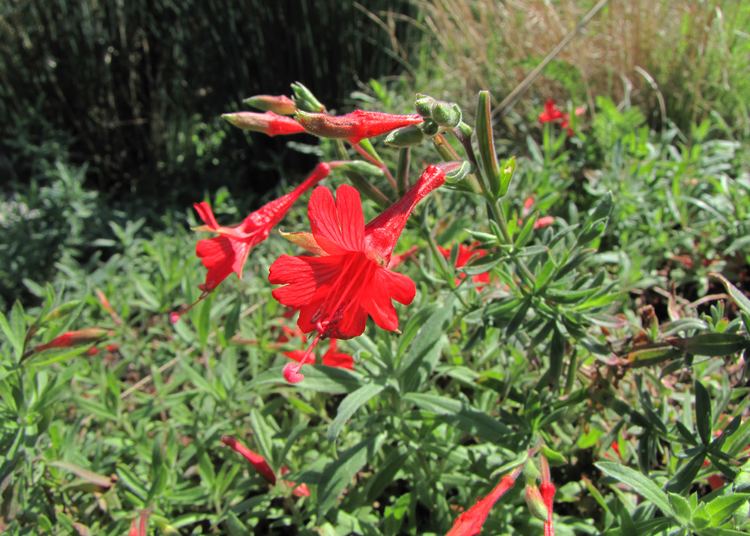
It is a subshrub growing to 60 cm tall. Native populations of these plants exhibit considerable variation in appearance and habit. The small leaves may be opposite or alternate, lance-shaped or ovate, with short to nonexistent stalks, and range in color from green to nearly white. Overall shape may be matting or mounding, the plants commonly spreading via rhizomes. The racemes of tubular or funnel-shaped flowers are terminal, and colors are mostly reddish, ranging from fuchsia to pink to red-orange.
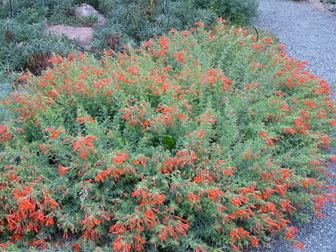
The wide degree of variation has led to the description of many subspecies, mostly no longer recognised as distinct due to the extensive intergradation between them; the following are still recognised:
Cultivation
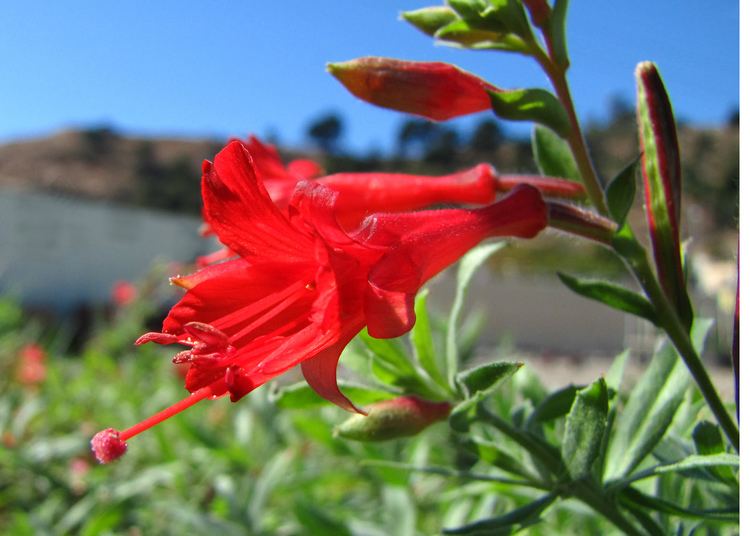
As befits their origin, they prefer to be cultivated in well-drained soil exposed to full sun but protected from the wind, and need little watering.
A small number of hybrid cultivars have been introduced by various growers, in some cases by working from isolated populations, such as those on Santa Cruz Island off the California coast.
